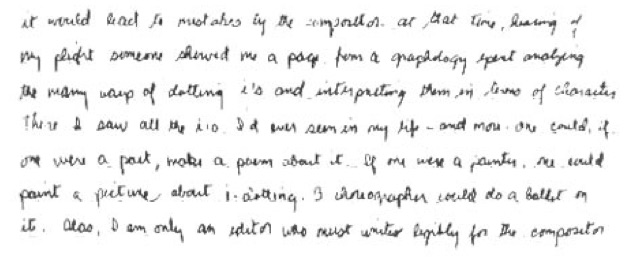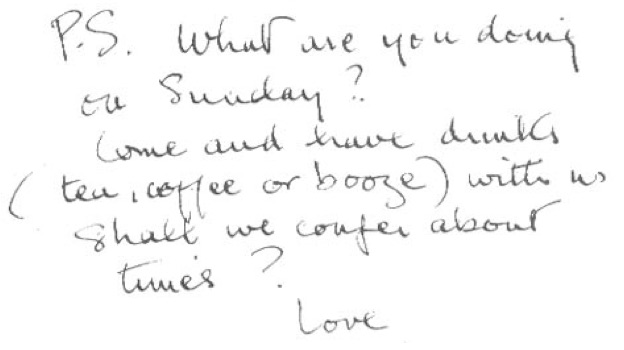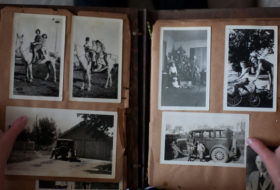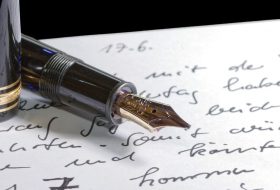Photo by Andrea Piacquadio
What are personality types?
Personality types are people with similar personality traits and characteristics.
A theory of Personality Types gives us a useful way to group individuals into certain categories according to their personalities. It’s a theory also known as typology.
But the world today is all about individuals.
So it immediately invites controversy and often heated discussion because people resent being classified or put into boxes.
Obviously, it is not our intention to put people into boxes.
Even if we wanted to it isn’t possible because as useful as personality typing may be, it can only give us a very general idea of the personalities concerned.
Nevertheless, while we cannot pinpoint individual differences by generalizing, it is rather interesting to see how neatly some individuals do fall into certain categories.
Even the most individualistic of people can be placed into one or more categories of personality.
Personality Types in Handwriting
Everything considered, personality types or typology can be seen as a good starting point when attempting to analyze handwriting. And here we see that it deals with far more than generalities.
Once we are able to classify an individual according to his or her type, it gives us a basis to work from. From there we can zoom in to deal with the specifics.
Graphology and Psychology
A lot of graphological theory is based on psychology.
So it’s hardly surprising that theories of some of the great psychologists such as Freud, Jung, Adler and Maslow have been successfully applied to graphology.
With regard to graphology, we find that Jung’s theory of personality types is particularly valuable because it can be so readily adapted to the study of handwriting.
Jung’s Personality Types in handwriting
The Personality Types that are most commonly applied to handwriting are based on Jung’s Theories.
In fact, Jung’s theory of personality types forms the basis of the Myers-Briggs test or MBTI that is so widely used today.
Furthermore, it was Jung who invented the terms “introvert” and “extrovert” which are so popularly used to describe the way in which we relate to other people and indeed the world around us.
While introverts relate to their environment in a private and inner directed way, extroverts direct their attention more to the outside world.
Our need for company or otherwise and our ability to relate to people either in small groups or in large get-togethers explains a lot about us.
But there’s more!
The Four functions
Jung further explained that we make use of an additional “four functions.”
The functions are: thinking, feeling, sensation and intuition.

When these functions are used in combination with the two attitudes of introversion or extroversion they give us important insights into personality.
This is a simplified explanation of Jung’s theory of types but by way of interest, Jung’s wrote a very detailed and erudite explanation of his typological theory in his book “Psychological Types.”
Jung’s description of personality types is particularly useful when it is applied to handwriting
We know that in handwriting movements towards the right indicate a movement towards people, while leftward movements are a retreat – a moving away from others.
We know that when a handwriting slants to the right it is one of the signs of an outgoing or extroverted personality. On the other hand, we note that leftward movements can point to introverted tendencies.
Upright handwriting relates to a person who keeps to himself. He has a rather impersonal and detached attitude towards other people.
The Introvert in handwriting
Introverts are private people who tend to keep low profiles and generally avoid crowds. They are happy with their own company, find comfort in solitude and are content to have only one or two good friends.
They mostly find renewal by looking inwardly. When tired or depressed they are better able to re-charge their batteries and become re-energized by connecting to a quiet place within themselves.
When faced with problems, they prefer to think up their own solutions rather than discuss their concerns.
In a relationship, an introvert would willingly listen to the problems of his partner, but would not be very willing to share his own confidences.
This is an illustration of an introverted male handwriting:

It is quite obvious that this man has a need for privacy and does not like to be crowded. He would feel uncomfortable socializing in large groups and would undoubtedly prefer to associate with only one or two people at a time.
Notice the small size of the letters and the tight, constrained appearance of the handwriting. Within the words, the letters are squeezed together as if the writer is afraid to let go or to make any sort of statement. He would prefer to keep a low profile.
There are indication of tension and inhibition and together with the mostly upright slant of detachment it shows an inability to relate to others. His extreme reserve is in fact increased by his feeling of interpersonal distancing which is something that we can see from the wide spaces between the lines.
The Extrovert in handwriting
Extroverts have a much stronger need for emotional and social involvement. They love being with all kinds of people and enjoy social interaction. As they relate easily to everyone they are not restrictive in their choice of friends.
They feel energized in company, enjoy being the centre of attention at parties and love being in the limelight.
Expansive, relaxed and socially at ease, extroverts tend to be enthusiastic and exuberant and love to have fun. They are usually good communicators.
Here is a sample of an extroverted type of handwriting. (Female.) You will easily see the difference in approach between the two samples.

Notice the large size and easy sweep of the writing as a whole. There is no squeezing or constriction of the letters. The capital letters are large and stand out clearly against the body of the writing. The spacing is generous, but not too spaced out.
Notice also how the left margin increases towards the bottom of the handwriting sample. This is a gesture that indicates a reaching out towards people.
The lines slope upwards and the t-bars slant upwards with enthusiasm and there is a firm, confident quality to the strokes. This is the bold, outgoing and optimistic handwriting of a typical extrovert.
Now take a look at your own handwriting. Do you fall into any of these categories?
Keep in touch for more free articles like this with:







Comments